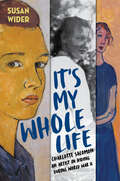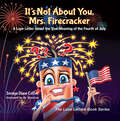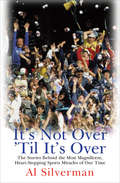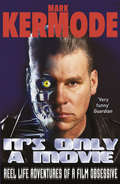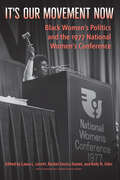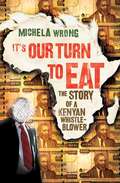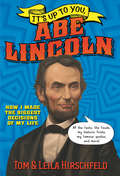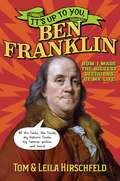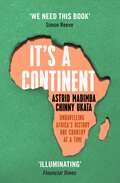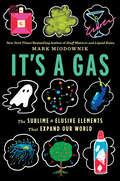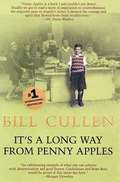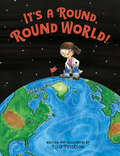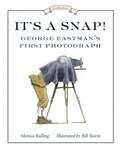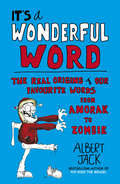- Table View
- List View
It's My Whole Life: Charlotte Salomon: An Artist in Hiding During World War II
by Susan WiderA gripping middle grade biography of Charlotte Salomon, and an ode to how art can capture both life’s everyday beauty and its monumental horrors. Charlotte Salomon was a German-Jewish artist born in Berlin. She is remembered for her autobiographical series of paintings, Life? or Theater?, which consists of 769 individual works painted between 1940 and 1942 while she was in hiding from the Nazis in the south of France, and which has been called a painted parallel to Anne Frank’s The Diary of a Young Girl and an early graphic novel. In 1943, she entrusted her collection of paintings to a friend. In October of that year, she was captured and deported to Auschwitz, where she and her unborn child were gassed to death upon arrival. It’s My Whole Life covers Charlotte’s remarkable life from her childhood and art school days to her time as a refugee in Nazi-occupied France, where she created the largest single work of art created by a Jew during the Holocaust. Compellingly written and accompanied by vivid color photographs of Salomon’s artwork, Susan Wider has crafted an illuminating portrait of an enigmatic and evanescent young artist.
It's Not About You, Mrs. Firecracker: A Love Letter About the True Meaning of the Fourth of July (The Love Letters)
by Soraya Diase CoffeltA patriotic homage to the Fourth of July teaching children the reason behind the holiday’s booms and barbecues through a crash course in American history.The Fourth of July is a very special American holiday and celebration. Families and friends spend fun time together and at night, beautiful fireworks are displayed for everyone to enjoy. But what actually happened on that day that causes us to remember and celebrate it for many hundreds of years? This wonderfully illustrated children’s book explains what brave Americans did to declare their freedom and equality, and identifies who was the source of guidance through it all.
It's Not Over 'Til It's Over: The Stories Behind Most Magnificent Heart-Stopping Sports Miracles of Our Time
by Al SilvermanFind inspiration in these &“enjoyable&” accounts of historic last-minute victories—both legendary and little-known—in the world of sports (Booklist). From a former editor of Sport magazine, this book is a journey through a century of athletic endeavor, from baseball to boxing and beyond—filled with true stories that remind us of some of the qualities that can help to create a champion: perseverance, determination, and hope. &“Re-creations of 13 dramatic sports events from the 20th century . . . While Silverman has chosen to profile a handful of well-documented events, such as New York Giant Bobby Thompson&’s 1951 home run at the Polo Grounds, the first Ali-Frazier prizefight in 1971 and the 1980 US hockey team&’s Olympic victory over the Russians, the real value of the book lies in his depiction of such obscure or neglected events as the 1923 boxing match between Argentine Luis Firpo and American Jack Dempsey, and the 1968 Harvard-Yale football game . . . The best piece follows an unknown Native American Marine from Kansas who shocked himself and the world by winning the 10,000-meter road race at the 1964 Tokyo Olympics . . . He often tracks down and interviews event participants to provide perspective from both the victor and the vanquished.&” —Publishers Weekly
It's Not TV: The Spectacular Rise, Revolution, and Future of HBO
by Felix Gillette John Koblin&“A read so riveting, it's not hard to imagine watching it unfold on Sunday nights.&” —The Associated PressThe inside story of HBO, the start-up company that reinvented television—by two veteran media reportersHBO changed how stories could be told on TV. The Sopranos, Sex and the City, The Wire, Game of Thrones. The network&’s meteoric rise heralded the second golden age of television with serialized shows that examined and reflected American anxieties, fears, and secret passions through complicated characters who were flawed and often unlikable. HBO&’s own behind-the-scenes story is as complex, compelling, and innovative as the dramas the network created, driven by unorthodox executives who pushed the boundaries of what viewers understood as television at the turn of the century. Originally conceived by a small upstart group of entrepreneurs to bring Hollywood movies into living rooms across America, the scrappy network grew into one of the most influential and respected players in Hollywood. It&’s Not TV is the deeply reported, definitive story of one of America&’s most daring and popular cultural institutions, laying bare HBO&’s growth, dominance, and vulnerability within the capricious media landscape over the past fifty years. Through the visionary executives, showrunners, and producers who shaped HBO, seasoned journalists Gillette and Koblin bring to life a dynamic cast of characters who drove the company&’s creative innovation in astonishing ways—outmaneuvering copycat competitors, taming Hollywood studios, transforming 1980s comedians and athletes like Chris Rock and Mike Tyson into superstars, and in the late 1990s and 2000s elevating the commercial-free, serialized drama to a revered art form. But in the midst of all its success, HBO was also defined by misbehaving executives, internal power struggles, and a few crucial miscalculations. As data-driven models like Netflix have taken over streaming, HBO&’s artful, instinctual, and humanistic approach to storytelling is in jeopardy. Taking readers into the boardrooms and behind the camera, It&’s Not TV tells the surprising, fascinating story of HBO&’s ascent, its groundbreaking influence on American business, technology, and popular culture, and its increasingly precarious position in the very market it created.
It's Not TV: Watching HBO in the Post-Television Era
by Brian L. Ott Marc Leverette Cara Louise BuckleySince first going on the air in 1972, HBO has continually attempted to redefine television as we know it. Today, pay television (and HBO in particular) is positioned as an alternative to network offerings, consistently regarded as the premier site for what has come to be called "quality television." This collection of new essays by an international group of media scholars argues that HBO, as part of the leading edge of television, is at the center of television studies’ interests in market positioning, style, content, technology, and political economy. The contributors focus on pioneering areas of analysis and new critical approaches in television studies today, highlighting unique aspects of the "HBO effect" to explore new perspectives on contemporary television from radical changes in technology to dramatic shifts in viewing habits. It’s Not TV provides fresh insights into the "post-television network" by examining HBO’s phenomenally popular and pioneering shows, including The Sopranos, The Wire, Six Feet Under, Sex and the City as well as its failed series, such as K Street and The Comeback. The contributors also explore the production process itself and the creation of a brand commodity, along with HBO’s place as a market leader and technological innovator. Contributors: Kim Akass, Cara Louise Buckley, Rhiannon Bury, Joanna L. Di Mattia, Blake D. Ethridge, Tony Kelso, Marc Leverette, David Marc, Janet McCabe, Conor McGrath, Shawn McIntosh, Brian L. Ott, Avi Santo, Lisa Williamson Foreword by Toby Miller Marc Leverette is Assistant Professor of Media Studies at Colorado State University. He is author of Professional Wrestling, the Myth, the Mat, and American Popular Culture and co-editor of Zombie Culture: Autopsies of the Living Dead and Oh My God, They Deconstructed South Park! Those Bastards! Brian L. Ott is Associate Professor of Media Studies at Colorado State University. He is author of The Small Screen: How Television Equips Us to Live in the Information Age. Cara Louise Buckley is a lecturer at Emerson College.
It's Not You, It's Capitalism: Why It's Time to Break Up and How to Move On
by Malaika JabaliA biting, brilliant, often hilarious guide to socialism for budding anti-capitalists who know it&’s time to dump their toxic ex (Capitalism) and try something finer. Journalist Malaika Jabali debunks myths, centers forgotten socialists of color who have shaped our world, and shows socialism is not all Marx and Bernie Bros—it can be pretty sexy. We&’ve all dated someone who took control of the relationship—you know, someone who makes you feel like you&’re unhappy because you&’re just not putting in the work, or it&’s all in your head. But when you think about trying to meet new people, it feels terrifying. Like, have you looked at Tinder recently? It&’s rough out there! Your tough-love new best friend, award-winning journalist, policy attorney, and life-long socialist Malaika Jabali is here to say: we are all in a generations-long toxic relationship with Capitalism, and it is time to get the h*ll out of there and move ALONG. She gives you everything you need to know about what a healthy relationship could actually look like, issue by issue—from healthcare and housing to the whole concept of American democracy—with our new boo: Socialism. And no, Socialism isn&’t the boring, grey, authoritarian, Cold-War-era monster that you&’ve heard about. With accessible explanations and illustrations, often surprising graphs and stats, and some Drake memes, this book will show you that we NEED to build a world that&’s safer, kinder, cleaner, healthier, and more equal. And that this isn&’t a utopian dream – it&’s within our grasp, if we collectively decide to call out Capitalism for what it really is and wake up to a better future. Fun, smart, and inspiring, It&’s Not You It&’s Capitalism is the hottest new relationship in your life!
It's Only a Movie: Reel Life Adventures of a Film Obsessive
by Mark KermodeIn It's Only a Movie, the incomparable Mark Kermode takes us into the weird world of a life lived in widescreen. Join him as he gets lost in Russia on the trail of a low-budget horror flick, gasp as he's shot at in Hollywood while interviewing Bavarian director Werner Herzog, cheer as he gets thrown out of the Cannes film festival for heckling in very bad French, and cringe as he's handbagged by Helen Mirren at London's glitzy BAFTA Awards. Written with sardonic wit and wry good humour, this compelling cinematic memoir is genuinely 'inspired by real events'.
It's Our Movement Now: Black Women’s Politics and the 1977 National Women’s Conference
by Laura L. Lovett, Rachel Jessica Daniel, and Kelly N. GilesProfiles of influential Black women activists at a historic moment This volume offers a panoramic view of Black feminist politics through the stories of a remarkable cross section of Black women who attended the 1977 National Women’s Conference. These women advocated for civil and women’s rights but also for accessibility, lesbians, sex workers, welfare recipients, laborers, and children. The women featured in this book include icons Coretta Scott King and Michelle Cearcy, a teenager who served as a torchbearer at the conference. Contributors offer insights into the lives of Gloria Scott, Dorothy Height, Freddie Groomes-McLendon, and Jeffalyn Johnson. The profiles include activist organizers Georgia McMurray, Barbara Smith, Johnnie Tillmon, Addie Wyatt, and Florynce Kennedy. The hard-won achievements of politicians are examined and celebrated, including those of Barbara Jordan, Shirley Chisholm, Maxine Waters, C. Delores Tucker, the first Black female secretary of state for Pennsylvania, and Yvonne Burke, one of the first Black women elected to Congress and the first representative to give birth while serving. The final profiles cover Clara McClaughlin, reporter Melba Tolliver, and photojournalist Diana Mara Henry, who shared the details of the conference and the continual work being done by Black women with others through various media channels. This book places the diversity of Black women’s experiences and their leadership at the center of the history of the women’s movement. Publication of this work made possible by a Sustaining the Humanities through the American Rescue Plan grant from the National Endowment for the Humanities.
It's Our Turn to Eat: The Story of a Kenyan Whistle-Blower
by Michela WrongThe true story of one man&’s fight against corruption: "like a John Le Carré novel&” that shows &“how and why Kenya descended into political violence&” (Washington Post). In January 2003, Kenya was hailed as a model of democracy after the peaceful election of President Mwai Kibaki. By appointing respected longtime reformer John Githongo as anticorruption czar, the new Kikuyu government signaled its determination to end the shady practices that had tainted the previous regime. Yet only two years later, Githongo himself was on the run, having secretly compiled evidence of official malfeasance throughout the new administration. Unable to remain silent, Githongo, at great personal risk, made the painful choice to go public. The result was a Kenyan Watergate. Michela Wrong&’s account of how a pillar of the establishment turned whistle-blower—instantly becoming one of the most hated and admired men in Kenya—grips like a political thriller while probing the very roots of the nation&’s predicament.&“A fast-paced political thriller. . . . Wrong&’s gripping, thoughtful book stands as both a tribute to Githongo&’s courage and a cautionary tale.&” —New York Times Book Review
It's Up to You, Abe Lincoln (It's Up to You)
by Leila Hirschfeld Tom HirschfeldHistory gets hilarious in this interactive Abraham Lincoln biography that will have readers laughing while they learn. Perfect for readers of Nathan Hale's Hazardous Tales.Abraham Lincoln was one of the greatest presidents of all time. But what did it take to rise from frontier poverty? To lead his country through the Civil War? To alter the course of history forever?Father-daughter team Tom and Leila Hirschfeld's tongue-in-cheek biography explores ten crucial decisions in one amazing life. With over one hundred pieces of archival and original art, fun facts, sidebars, historical trivia, and more, this book follows Abe's footsteps through the close calls that defined his leadership and shaped America as we know it today."Be a best friend and give this book to someone who has not read it." -Kirkus, Starred review
It's Up to You, Ben Franklin: How I Made The Biggest Decisions Of My Life (It's Up to You)
by Leila Hirschfeld Tom HirschfeldHistory meets humor in this interactive Benjamin Franklin biography. Laugh and learn as this American hero make the toughest choices of his life. Perfect for readers of Nathan Hale's Hazardous Tales.You're Benjamin Franklin: inventor, humorist, diplomat-spy, and Founding Father. To rise from humble beginnings and become an American hero, you have to weigh the facts, trust your gut, and make tough choices that will forge America's destiny. No pressure!In this tongue-in-cheek biography, father-daughter team Tom and Leila Hirschfeld explore eleven critical decisions that shaped Ben's incredible life. With over 100 pieces of archival and original art, fun facts, historical trivia, sidebars, and more, follow Ben's footsteps through the smart calls and near misses that launched his career and helped unite the United States!
It's Up to the Women
by Jill Lepore Eleanor Roosevelt"Eleanor Roosevelt never wanted her husband to run for president. When he won, she . . . went on a national tour to crusade on behalf of women. She wrote a regular newspaper column. She became a champion of women's rights and of civil rights. And she decided to write a book."--Jill Lepore, from the Introduction"Women, whether subtly or vociferously, have always been a tremendous power in the destiny of the world," Eleanor Roosevelt wrote in It's Up to the Women, her book of advice to women of all ages on every aspect of life. Written at the height of the Great Depression, she called on women particularly to do their part--cutting costs where needed, spending reasonably, and taking personal responsibility for keeping the economy going.Whether it's the recommendation that working women take time for themselves in order to fully enjoy time spent with their families, recipes for cheap but wholesome home-cooked meals, or America's obligation to women as they take a leading role in the new social order, many of the opinions expressed here are as fresh as if they were written today.
It's What's Inside the Lines That Counts
by Fay VincentIt's What's Inside the Lines That Counts brings together ballplayers, managers, an umpire, and the first head of the players' union to describe the momentous changes to the game that took place in the 1970s and 1980s. Former MLB commissioner Fay Vincent draws from his ongoing oral history of the game to celebrate the era that spans the Miracle Mets through free agency to Cal Ripken's historic consecutive-games streak. Willie McCovey remembers meeting the Giants' other Willie and the powerful impact that Willie Mays had on him. He expresses pride that the Giants chose to honor him at their ballpark with McCovey Cove. Teammate Juan Marichal, one of baseball's Latino pioneers, recalls encountering racism for the first time in America. He recounts fortuitously overhearing a conversation among Latino ballplayers before a Giants-Pirates game that provided him with crucial information about Roberto Clemente. Managers Dick Williams and Earl Weaver assess their Hall of Fame careers. Williams remembers his contentious relationship with Charlie Finley and explains why he never managed for George Stein-brenner. Earl Weaver says he has changed, that umpires were "fantastic people," and that he shouldn't have gotten thrown out of so many ballgames. Read it here for yourself. Tom Seaver, one of the dominant pitchers of his era, shares a funny incident from his first All-Star game, when he was young and looked even younger, and discloses the important piece of baseball wisdom that Gil Hodges gave him early in his career that has guided him ever since. Don Baylor recalls playing with a variety of teammates and teams, including the remarkable experience of playing in three consecutive World Series with three different teams, going from the 1986 Red Sox that came so close to winning the Series to the 1987 Minnesota Twins team that actually did it. Hall of Famer Ozzie Smith, "the Wizard of Oz," tells the story of how he began his signature back flip and offers insights into how he was able to pull off some of the most spectacular defensive plays in baseball history. Baseball's Iron Man Cal Ripken remembers the high expectations that came with being the son of a baseball manager and explains why the "Orioles way" was more than just a slogan for him. Bruce Froemming, MLB's longest-serving umpire, reveals the rules behind the fine art of allowing managers and coaches to have their say and still maintain absolute control over the game. And Marvin Miller, one of the most important figures in the history of the game, explains the origins and intentions of baseball's players' union and why he is so proud of what it has achieved.No fan of the game will want to pass up this illustrated, fascinating remembrance of two decades when baseball changed forever.
It's a Continent: Unravelling Africa's history one country at a time
by Astrid Madimba Chinny Ukata'. . . we need this book. Of course Africa needs it as well, because no other huge area of the planet is treated as such a singular region, and that has to change. But the rest of the planet needs It's a Continent because we miss out by not recognising the individual majesty, the complexity, the beauty, the culture and the stories of the dozens of African countries. We owe it to ourselves and our history to put that right.' - Simon ReeveWhy is Africa still perceived as a single country?How did African soldiers contribute to World War II?Who else led the charge against Apartheid in South Africa?How did an African man become one of the wealthiest people in history?There are (hi)stories you were never taught in school.IT'S A CONTINENT delves into these stories and reveals an Africa as you've never read it before. Breaking down this vast, beautiful, and complex continent and exploring each nations' unique history and culture, IT'S A CONTINENT highlights the key historical moments that have shaped each nation and contributed to its modern global position.Each chapter focuses on a different country and uncovers stories that mainstream education doesn't address at its peril.This book aims to highlight the consequences of colonialism and how this legacy reverberates today, as well as how many African countries continue to re-build in its wake.IT'S A CONTINENT is a bold and colourful corrective to the perception of Africa as a monolith. It reveals the fascinating, often overlooked, histories of its 54 nation states too often misrepresented, its inhabitants and its place in the world too often neglected.
It's a Continent: Unravelling Africa's history one country at a time ''We need this book.' SIMON REEVE
by Astrid Madimba Chinny Ukata'We need this book' SIMON REEVE'Illuminating' FINANCIAL TIMESWhy is Africa often perceived as a single country? What role did African soldiers play in the Second World War?Who else led the charge against Apartheid in South Africa?How did an African man become one of the wealthiest people in history?It's a Continent unravels these untold stories and delves into the fascinating and diverse cultures of Africa's 54 nations.With its bold and colourful narrative, It's a Continent breaks down this vast and complex continent, chapter by chapter, focusing on each country's unique history. From ancient kingdoms to modern struggles for independence, from overlooked heroes to monumental achievements, this book shines a light on the pivotal moments that have shaped Africa's position on the global stage.This book is a corrective to the misconceptions and misrepresentations of Africa as a monolith. Through its pages, you'll discover Africa's diversity, beauty and complexity and gain a deeper appreciation for its rich heritage and contributions.
It's a Gas: The Sublime and Elusive Elements That Expand Our World
by Mark MiodownikThe New York Times bestselling author of Stuff Matters presents a rollicking guided tour of the secret lives of gases: the magnificent, strange, and fascinating substances that shape our world.Gases are all around us—they fill our lungs, power our movement, create stars, and warm our atmosphere. Often invisible and sometimes odorless, these ubiquitous substances are also the least understood materials in our world, and always have been. It wasn’t long ago that gases were seen as the work of ancient spirits: the sudden closing of a door after a change in airflow signaled a ghost’s presence. Scientists and engineers have struggled with their own gaseous demons. The development of high-pressure steam power in the eighteenth century literally blew away some researchers, ushering in a new era for both safety regulations and mass transit. And carbon dioxide, that noxious by-product of fossil fuel consumption and cow burps, gave rise to modern civilization. Its warming properties known for centuries, it now spells ruin for our fragile atmosphere. In It’s a Gas, bestselling materials scientist Mark Miodownik chronicles twelve gases and technologies that shaped human history. From hydrogen, carbon dioxide, and neon to laughing gas, steam, and even wind, the story of gases is the story of the space where science and belief collide, and of the elusive limits of human understanding.
It's a Long Way from Penny Apples
by Bill Cullen[From the back cover] "Tis better to be born lucky than rich. ... There are many tragic stories in Ireland of those who have succumbed to the despair of abject poverty, those who were unable to save themselves or their loved ones from the harsh realities of oppression. But It's a Long Way from Penny Apples is a different view of the Irish experience, one man's journey out of the grinding poverty that held an entire generation of Irishmen in its thrall. Born and bred in the rough inner city slums of Summerhill in Dublin, Bill was one of fourteen children. Through hard work and determination, Bill went from selling flowers and newspapers on the street to owning the biggest Ford dealership in Ireland, and eventually became a multimillionaire. Bill Cullen's story is an account of incredible poverty and deprivation in the Dublin slums--and incredible success. It highlights the frustration of a father and mother feeling their relationship crumble as they fight to give their children a better life. It's a story of courage, joy, and happiness--of how a mother gave inspiration and values to her children, saying to them, "The best thing I can give you is the independence to stand on your own feet." "The story of a Dubliner reflecting with stunning honesty on his city and his past. With characters that leap off the page, it combines blunt realism with the everyday humor of Northside Dublin life. An incredible book." --Bertie Ahern, T.D., Taoiseach (prime minister) of Ireland
It's a Lovely Day Tomorrow: A nostalgic saga set in wartime Blackpool
by Margaret ThorntonWith the war providing escape, how long will their happiness last? Set during the advent of the Second World War, Margaret Thornton's It's a Lovely Day Tomorrow follows two sisters as they discover independence for the first time... as well as love. Perfect for fans of Pam Evans and Maureen Lee. 'Warm-hearted, evocative saga of life in Blackpool during World War II' - British Book News Jenny Carter has always led a sheltered life, protected by those she loves. Leaving school at fourteen, she is faced with no alternative but to help her mother, Annie, run Pleasant View boarding house in Blackpool. To the holidaymakers it is a welcoming retreat, but to Jenny and her younger sister Violet, who struggle to keep up with their mother's intolerable demands, it feels more like the workhouse. Then Jenny meets Tom Bradshaw, an idealistic young Yorkshire lad who not only stands up to Annie's caustic remarks, but whisks Jenny straight off her feet and down the aisle.Happy though their marriage is and much as she loves their young daughter, Jenny feels she has slipped uncontrollably from dominated daughter into doting wife and mother, and there are times when she yearns for the independence she has been denied. Then Germany invades Poland, and Tom, eager for a slice of the action, joins up to fight in the Second World War.The ensuing war years provide Jenny and her sister with their first taste of freedom: Violet finds work in an aircraft factory, while Jenny takes in a little evacuee. And before long, both girls have begun to fall in love... What readers are saying about It's a Lovely Day Tomorrow: 'If you like wartime stories, you will love this. Very down to earth about what went on behind the scenes, and very realistic''A good family saga which I love and could read forever' 'Five stars'
It's a Lovely Day Tomorrow: A nostalgic saga set in wartime Blackpool
by Margaret ThorntonWith the war providing escape, how long will their happiness last? Set during the advent of the Second World War, Margaret Thornton's It's a Lovely Day Tomorrow follows two sisters as they discover independence for the first time... as well as love. Perfect for fans of Pam Evans and Maureen Lee. 'Warm-hearted, evocative saga of life in Blackpool during World War II' - British Book NewsJenny Carter has always led a sheltered life, protected by those she loves. Leaving school at fourteen, she is faced with no alternative but to help her mother, Annie, run Pleasant View boarding house in Blackpool. To the holidaymakers it is a welcoming retreat, but to Jenny and her younger sister Violet, who struggle to keep up with their mother's intolerable demands, it feels more like the workhouse. Then Jenny meets Tom Bradshaw, an idealistic young Yorkshire lad who not only stands up to Annie's caustic remarks, but whisks Jenny straight off her feet and down the aisle.Happy though their marriage is and much as she loves their young daughter, Jenny feels she has slipped uncontrollably from dominated daughter into doting wife and mother, and there are times when she yearns for the independence she has been denied. Then Germany invades Poland, and Tom, eager for a slice of the action, joins up to fight in the Second World War.The ensuing war years provide Jenny and her sister with their first taste of freedom: Violet finds work in an aircraft factory, while Jenny takes in a little evacuee. And before long, both girls have begun to fall in love... What readers are saying about It's a Lovely Day Tomorrow: 'If you like wartime stories, you will love this. Very down to earth about what went on behind the scenes, and very realistic''A good family saga which I love and could read forever' 'Five stars'
It's a New World, Charlie Brown! (Peanuts Great American Adventure)
by Charles M. Schulz Tom BrannonCharlie Brown and friends are headed to Camp New World to see what life was like for the pilgrims. Lucy can’t wait to get all dressed up. Sally can’t wait to pick flowers. Linus is looking forward to fishing. But when the Peanuts gang arrives at Camp New World, they discover everything is a lot harder than they thought! Can everyone work together to plan a feast just like the pilgrims’ Thanksgiving?
It's a Round, Round World! (A Joulia Copernicus Book)
by Ellie PetersonWe all know the earth is round. But HOW do we know? Join intrepid young scientist-adventurer Joulia Copernicus as she takes readers on a historical journey through time and space. From jumping on board Columbus's ship to planet-hopping in the outer reaches of our solar system, Joulia explains with humor and wit the ins and outs of how we learned that the earth is round.
It's a Snap!: George Eastman's First Photo (Great Idea Series #1)
by Monica KullingIn 1877 in Rochester, New York, George Eastman couldn’t understand why picture-taking was so difficult. Having left school at fourteen to support his mother and two sisters, George decided to find out by making photography his hobby. He packed up glass plates, a plate holder, a tent, a heavy tripod, a thick piece of black cloth, a water jug, and chemicals and set off to take his first photograph. George realized that not many people could own a camera — they were too expensive and the size of today’s microwave ovens! But how could he make picture-taking easier? Eventually, George created dry plates, and they were such a success that he opened his own dry-plate company in 1881. But this was only the beginning — George went on to invent film and the Brownie camera. The rest is history.Monica Kulling’s spunky, playful text is beautifully complemented by the stunning pen-and-ink with watercolor illustrations of artist Bill Slavin. It’s a Snap! George Eastman’s First Photo introduces a new series for Tundra — the Great Idea Series — a must-have for schools, libraries, and parents alike.
It's a Wonderful Word: The Real Origins of Our Favourite Words
by Albert JackDid you know that an assassin is a hashish-eater and a yokel a country woodpecker? That Dr Mesmer mesmerised patients back to health or that Samuel Pepys enjoyed a good game of handicap? While we're at it, what have spondulics to do with spines or lawyers with avocados?In It's a Wonderful Word, bestselling author Albert Jack collects over 500 of the strangest, funniest-sounding and most delightful words in the English language, and traces them back to their often puzzling origins. While brushing up on your gibberish or gobbledygook, discover why bastards should resent travelling salesmen, why sheets should remain on tenterhooks and why you should never set down a tumbler before finishing your drink.From blotto to bamboozle and from claptrap to quango, Albert Jack's addictive anecdotes bring the world's most colourful language to life and are guaranteed to surprise and entertain.
It's in His Kiss (Bridgerton Series #7)
by Julia QuinnMeet Our Hero . . . Gareth St. Clair is in a bind. His father, who detests him, is determined to beggar the St. Clair estates and ruin his inheritance. Gareth's sole bequest is an old family diary, which may or may not contain the secrets of his past . . . and the key to his future. The problem is-it's written in Italian, of which Gareth speaks not a word. Meet Our Heroine . . . All the ton agreed: there was no one quite like Hyacinth Bridgerton. She's fiendishly smart, devilishly outspoken, and according to Gareth, probably best in small doses. But there's something about her-something charming and vexing-that grabs him and won't quite let go . . . Meet Poor Mr. Mozart . . . Or don't. But rest assured, he's spinning in his grave when Gareth and Hyacinth cross paths at the annual-and annually discordant-Smythe-Smith musicale. To Hyacinth, Gareth's every word seems a dare, and she offers to translate his diary, even though her Italian is slightly less than perfect. But as they delve into the mysterious text, they discover that the answers they seek lie not in the diary, but in each other . . . and that there is nothing as simple-or as complicated-as a single, perfect kiss.
Italia '90: Una épica de lo imposible
by Pablo S. AlonsoUn relato completo, dinámico y detallado de Italia '90, la copa mundial de fútbol en la que el seleccionado argentino estuvo a punto de repetir la épica del 86 y que ha quedado marcada a fuego en la memoria emocional de varias generaciones. Posiblemente haya sido uno de los peores mundiales de la era moderna. Posiblemente haya sido, también, uno de los peores equipos argentinos en mucho tiempo. Sin embargo, el Mundial 90 permanecerá marcado a fuego en la memoria de los que lo vivimos. Un equipo repleto de defensores, con el crack averiado, con muchos jugadores en malas condiciones físicas, pero que fue avanzando contra todo pronóstico. Una Armada Brancaleone en pantalones cortos. "Notti magiche", las patadas de los cameruneses, Caniggia en el banco, la derrota inicial, la fractura de Pumpido, el regreso de la Mano de Dios, los centros (errados) de Goyco, Batista homenajeando a la Momia, el pase agónico a octavos, los tiros en los palos de Brasil, el bidón de Branco, el gol de Cani, los penales contra Yugoslavia, el tobillo de Maradona, los silbidos al himno, Zenga tirando un puñetazo al aire, la sonrisa de Cani, los penales de Goyco, siamo fuori, la final, Codesal, las lágrimas de Maradona. Solo algunas de las muchas cosas que se pueden enumerar; una lista no taxativa. Italia '90. Una épica de lo imposible transita cada uno de los caminos y meandros de ese torneo extraño pero entrañable, en el que un equipo alteró su destino a base de obstinación, personalidad y suerte. Con el análisis de cada una de las aristas de ese verano italiano repleto de noches mágicas, Pablo Alonso consigue ingresar al canon de grandes autores -Sasturain, Burgo, Borinsky y Vignone, entre otros- de libros mundialistas.Matías Bauso, autor de 78. Historia oral del Mundial Con mucho material de archivo y numerosas entrevistas a quienes estuvieron ahí, lo vivieron o lo cubrieron en su momento -y con el monumental trabajo de Matías Bauso sobre el mundial de 1978 como referencia-, el periodista Pablo S. Alonso asume la compleja tarea de retratar Italia '90, acaso uno de los últimos mundiales que alcanzaron el aura de campeonato épico en la memoria colectiva. Su exhaustiva investigación reconstruye el contexto -primeros tiempos del menemismo- en que el seleccionado de Bilardo, que venía de ganar el campeonato del 86, viajó a Europa. Quiénes fueron los grandes personajes (Maradona, de alguna manera también Claudia Villafañe, Coppola, Havelange y Grondona; el Pájaro Claudio "Paul" Caniggia; Olarticoechea, Burruchaga y, por supuesto, Goycochea), quiénes los grandes ausentes (Valdano), quiénes los "villanos" (Codesal, el discutidísimo árbitro de la final); cómo fue el negocio (barrabravas; turismo; política), la cobertura mediática, los mitos y rumores; cuáles los trucos del DT (las cábalas y los artilugios no siempre limpios para alentar a los propios y las jugadas sucias para debilitar a los rivales) y cómo fue cada uno de los partidos de Argentina: contra Camerún, Rusia, Rumania, Brasil, Yugoslavia (con el pormenorizado relato de los diez penales que definieron el encuentro), el triunfo sobre el anfitrión y, finalmente, el reencuentro con Alemania. Perfecto para leer escuchando "Un'estate Italiana", conocida popularmente como "Notti magiche", la emotiva canción oficial.
